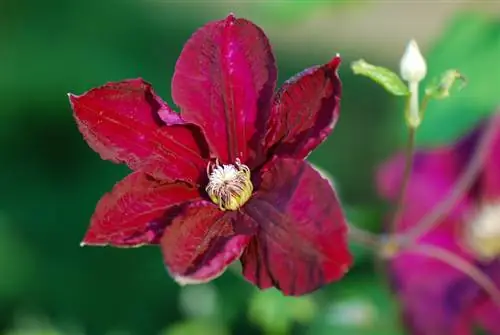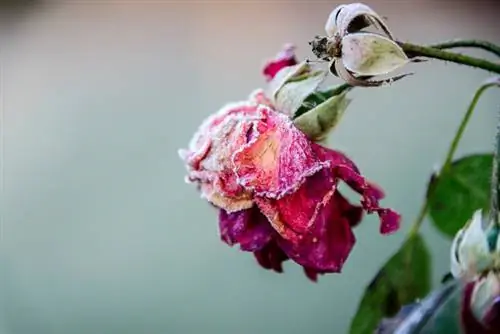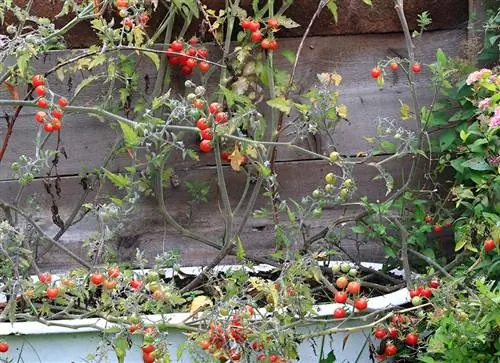- Author admin [email protected].
- Public 2023-12-16 16:46.
- Last modified 2025-06-01 06:02.
Are there winter-hardy asters or are they all sensitive to frost and suffer from ice and snow? You can read below that overwintering is not always necessary and which specimens should receive winter protection!

Are asters hardy and frost-proof?
Most asters are hardy and tolerate frost, such as cushion asters (-40°C), rough-leaf asters (-45°C), smooth-leaf asters (-45°C), mountain asters (-28°C) and Alpine asters (-40°C). Winter protection is only necessary for sensitive varieties, potted plants or in harsh regions.
Different species and their winter hardiness
Basically, no special winter protection is necessary for asters as they can tolerate frost. Here is the frost hardiness of the best-known species in a protected position:
- Cushion asters: up to -40 °C
- Rough leaf asters: -45 °C
- Smooth leaf asters: -45 °C
- Mountain asters: -28 °C
- Alpine asters: -40 °C
When overwintering makes sense
But there are also circumstances that make wintering or winter protection useful. On the one hand, sensitive varieties should be provided with winter protection. On the other hand, specimens that are cultivated in pots should be protected from frost in the root area.
Even if you live in a cooler/harsh region such as a mountainous region, on the coast or on a slope, you should still protect your asters in winter. Asters should also be protected during long periods of severe frost.
Winter protection - what is suitable?
To prevent frost from creeping up to the root ball, you should protect your asters in the event of one of the reasons mentioned above. For example, a thick layer of:
- Leaves
- Mulch e.g. made from bark or compost (€41.00 at Amazon)
- brushwood
- or show pine trees
Don't cut back until spring
Important: Do not cut back your asters in autumn! Although these perennials do not look very attractive over the winter with their bare stems and seed heads, pruning in autumn is not advisable.
The stems and old leaves serve as natural winter protection for the plant. They should therefore not be removed. They not only protect against severe frost, but also against moisture. In March, asters can be safely cut down to the ground. In addition, these perennials can be divided in spring, for example with the aim of propagation.
Tip
Asters in pots should be placed on a protected house wall over the winter and also wrapped with fleece in the pot area.






